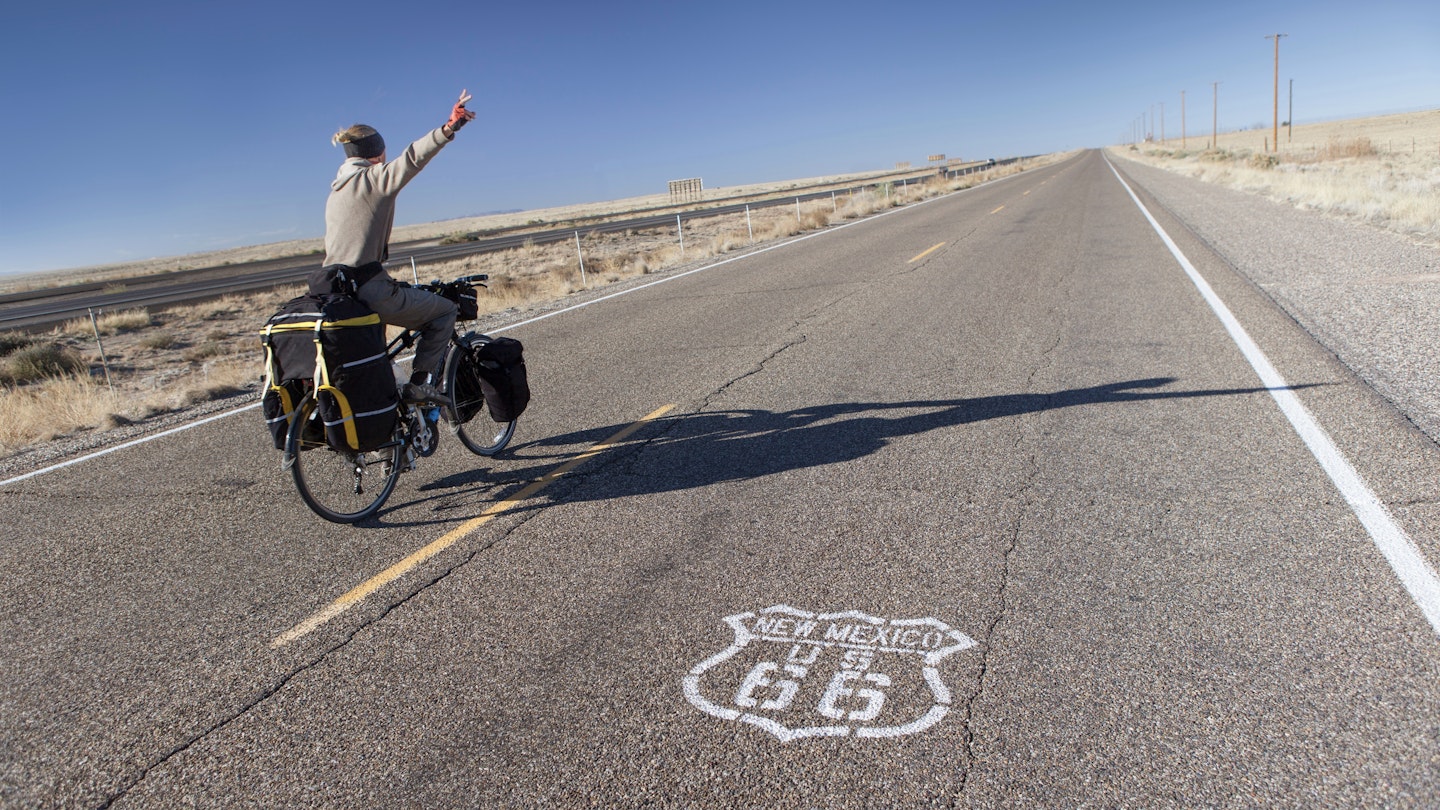Cycling on Route 66: A Sustainable Adventure
Motorists are no longer the only ones who can enjoy the allure of Route 66. With the addition of bike lanes, sections of the “Mother Road” have become increasingly safe for cyclists in recent years. Moreover, a significant $1 million grant from the US government is set to enhance these cycling paths even further.
According to the US Department of Transportation’s Federal Highway Administration (FHWA), this funding will improve safety along 1.3 miles of Route 66 as it meanders through Oklahoma by adding a turn lane and 8-foot shoulders. This project is part of 33 grants recently awarded to roadways within the National Scenic Byways Program, aimed at promoting safer travel and supporting local businesses.
The Oklahoma grant signifies a green renaissance for Route 66. Thanks to an increasing number of bike lanes, it has become easier than ever to traverse parts of this historic highway without relying on fossil fuels—ushering in a modern chapter for a road originally built for cars powered by internal combustion engines.
The History Behind the Highway
Linking Chicago and Los Angeles, Route 66 became a profound symbol of America’s automotive era after opening in 1926. In the 1930s, Midwestern migrants traveled west on this route to escape the Dust Bowl, while in the 1950s, middle-class families flocked to the highway in search of adventure. This expansive road eventually became synonymous with the romantic notion of cross-country road trips, immortalized in John Steinbeck’s literary work and Nat King Cole’s timeless music.
However, following the National Interstate and Defense Highways Act of 1956—which created faster routes and led to the replacement of segments of Route 66—the historic road’s appeal diminished, ultimately being officially decommissioned in 1985.
Today, the remnants of this iconic route slice through picturesque sections of the USA, presenting a nostalgic glimpse into American kitsch, all while navigating prairie fields and painted rocks toward the Pacific Ocean.
Cycling on Route 66
US Bike Route 66 (USBR 66) is part of the US Bicycle Route System’s expansive cycling network, which spans over 18,000 miles. This route parallels a portion of the historic strip on dedicated bike paths, county roads, and highways.
The first completed section of USBR 66 opened in 2018, establishing a connection between Kansas’ rolling hills and Missouri’s Gateway Arch. In 2021, California added nearly 330 miles to this route, while Oklahoma designated another 400 miles in 2022. Once fully completed, USBR 66 will stretch over 2,000 miles, providing access to small towns and roadside motels that have been overlooked by drivers for nearly a century.
While the 1.3-mile improvement in Oklahoma may seem insignificant in light of the long-term goals for the route, it reflects a larger movement toward sustainable energy in modern travel. Cities ranging from Portland to New York are striving to make cycling safer and more accessible, encouraging residents to embrace pedal power over gas-powered vehicles. Ultimately, if the vision of the US Bicycle Route System comes to fruition, approximately 50,000 miles of bike trails will connect the contiguous United States, offering emission-free highways for cycling enthusiasts.
The Mother Road may have appeared outdated for drivers in the 1980s; however, today it stands as a promising frontier for sustainable road trips.




